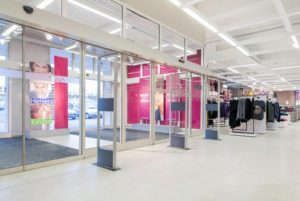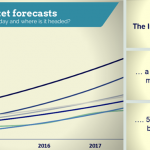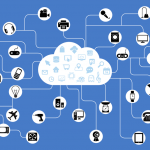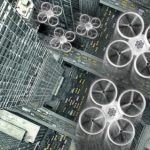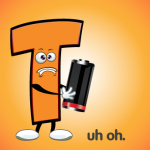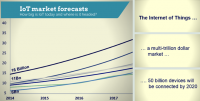For tomorrow’s cities, IoT is the name of the game
For tomorrow’s cities, IoT is the name of the game

Cities use up to 80% of the world’s resources, while occupying only 2% of its territory. That’s a pretty scary thought, right?
Smart cities are now a necessary tool in the long term economic growth and well-being of citizens, as well as in our obligation to control climate change. Smart urbanization brings convenience and opportunity to its residents, and spreads way past the tech hubs of San Francisco, Portland, Amsterdam or London.
It’s no longer a private tech sector passion project either. It’s a necessity that involves governments around the globe and brings a change to the world’s population. As Armen Orujyan put it, “if the smart cities and smart societies were an iceberg, then we have only seen the tip of it.” With that thought in mind, let’s peek into the undiscovered and uncharted territory where IoT meets business and the government.
It’s not all about the USA
It can’t be denied that the US is at the forefront of the Internet of Things revolution with companies such as Apple, Intel, Ford, Cisco, IBM and General Electric, as well as individuals and startups launching their IoT devices. That said, while according to Business Insider, the U.S. federal government spent almost $ 35 billion on Internet of Things solutions between 2011 and 2015, they are not the only, nor are they the biggest player in the game.
According to Gartner’s report published on June 9th of this year, spending by national, federal and local governments worldwide on technology products and services is forecast to grow from $ 430 billion in 2016 to $ 476 billon by 2020. With such a huge amount of money involved, the natural first question emerging is “who will benefit from all this”? The military? The average joe? Under-developed nations? Wall Street?
The answer isn’t as straightforward as some might think.
Businesses are actually the top adopters of IoT solutions, as they lower their operating costs and increase productivity. Those solutions also simplify development of new products and services, and lower the costs of entering new markets.
Then come governments – think monitoring transportation systems, identity management and verifications systems, using advanced algorithms to anticipate security risks and military bio-technologies.
Opposite to common perception, consumers will be the group least transformed by the IoT revolution — which is a whole different story. That’s not to say that the upcoming years won’t be groundbreaking for people like you and I. With the exciting R&D happening today, especially in the bio-medical field, before too long people will be able to swallow a pill that senses and reports the health of their digestive tract to a doctor over a secure Internet connection.
 Meet the wild card players: South Korea and The Netherlands
Meet the wild card players: South Korea and The Netherlands
South Korea and Netherlands launched their very own IoT networks in July of this year, proving that the Smart Cities truly are a global movement. In South Korea, SK Telecom — the largest wireless carrier in the country — is leading this initiative, introducing technology that will allow them to reach about 99% of the population.
South Korea and the Netherlands had been in somewhat of an IoT arms race. Each nation determined to be the first one to the finish line introduced a bit of competition into the projects. It is unclear who won as both countries made announcements around the same time, but the Netherlands appeared to have beaten the Koreans by just a few days. Dutch telecommunications company KPN said its own network for IoT connectivity became available across the European nation on June 30.
 Singapore: a country of the elderly?
Singapore: a country of the elderly?
According to demographers, a country needs to have 2.2 kids per woman for its population to hold steady. Welcome to Singapore, the home of the 0.81 ratio, the lowest ratio in the world.
Singapore took some drastic measures to fight the trend, including hosting a “National Night” in 2012, in which couples were encouraged “to let their patriotism explode,” but without a generation of young people who could help with taking care of the elderly, Singapore’s government is turning to IoT for help.
According to WSJ, private companies selected by the government would install the sensors throughout people’s living quarters, such as in their appliances and toilet. Real-time data on their movement patterns, sedentary behavior, and number of flushes would then get sent back to the company to be pushed to individual families via text message.
But that’s not everything. Singapore is also deploying an undetermined number of sensors and cameras across the island city-state that will allow the government to monitor everything from the cleanliness of public spaces to the density of crowds and the precise movement of every locally registered vehicle.
 Germany’s footprint
Germany’s footprint
Germany’s involvement in IoT reaches far beyond car manufacturers such as Mercedes-Benz and BMW working on connecting drivers and their cars to the Internet.
German Conductix-Wampfler provides countries such as UK and Italy with the technology needed to wirelessly charge buses. How does it work, exactly? Conductix provides induction chargers on the streets, as well as installs them inside of the buses. On a big scale those efforts will impact the air quality for the residents of congested zones in a significantly positive manner.
Metro’s Group groceries stores rolled out “smart freezers” technologies back in 2008. The RFID tags attached to the plastic foam trays contain a unique number, linking to data about the product (such as expiration dates) in the company’s internal database. Whenever a customer removes an item, an integrated RFID reader automatically reads its tag, allowing for exact planning of in-store fresh meat production for the owners, and a better quality of food purchased for their customers- pretty neat, huh?
Adler Modemärkte AG, one of the largest fashion retailers in Germany, also deployed RFID throughout its 170 Adler fashion outlets. RFID readers are located at the checkout areas, store entrances and the areas between the stockroom and the sales floor. The readers constantly monitor and manage all current stock in the stockroom and on the sales floor, reducing loss of goods, improving customer experience and eliminating out-of-stock situation whenever possible.

That technology of course doesn’t only apply to grocery stores and clothing retailers, but those projects are a fun way of introducing RFID technology to the public as an easy to understand concept.
Big or small, smart cities are changing the way of life as we know it. With endless possibilities ahead of us, we are all invited to enjoy the world’s journey to a better tomorrow and a brighter future. And whether you like it or not, IoT really is the name of the game.
The author is a tech enthusiast, startups addict and a passionate optimist. CEO @EverOpen.co and former COO @Unbits.
The post For tomorrow’s cities, IoT is the name of the game appeared first on ReadWrite.
(32)

